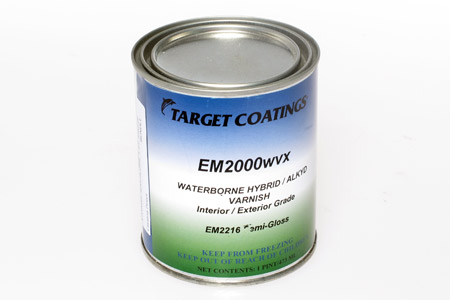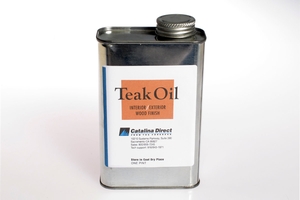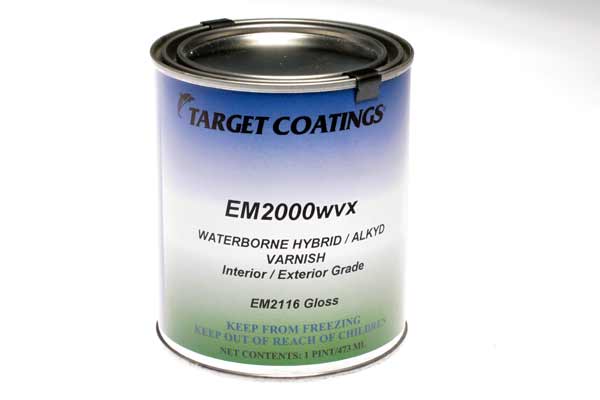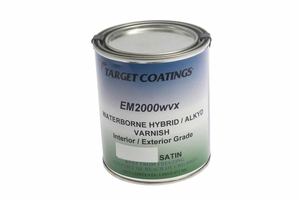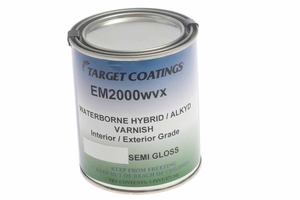This article details the history of the interior finishes used by Catalina Yachts over the many years of production. With a history of the products used, one can make an informed decision regarding which product to use to keep the boat looking nice. There are links within this article that will take you directly to the product when you click the link.
Wood on a boat is pleasing to the eye and touch, but requires some kind of finish to stand up in the marine environment. Moisture in wood will allow mildew spots to grow and enough time in the sun will bleach the wood and turn it grey. Refinishing the boat's wood will not only help it look better, but will help protect if from the harsh effect of the sun and salt water.
We don’t recommend changing from one finish to another. Changing requires that the wood be striped entirely of its old finish. Doing so sometimes results in exposing the substrate beneath the thin teak veneer. In addition, please be aware that your boat’s finish has changed over time. It is likely darker than when it left the factory. Refinishing an entire panel rather than attempting a spot repair usually achieves better results.
The earliest interior finish used by Catalina was teak oil. They had teak oil made for them from "a proprietary formula of vegetable and fish oils". Teak Oil is the traditional way to protect wood on the boat and is easy to get a nice looking oil finish. Teak oil was used until the late 1980's and is still used in the small boats. The wood is sanded until a uniform appearance is achieved, the dust is removed, and oil is wiped on. Teak oil allowed for fitting of bulkheads, trimming of drawers and cabinetry in the boat as the oil could be applied to the wood just before the boat was ready to ship. The dealer could reapply oil as needed to keep the boat looking nice until the boat found a happy home. Teak oil continues to be used on small boat interiors as it requires less maintenance than varnish. Catalina's original proprietary oil is no longer available. Since the migration primarily to varnish, it is no longer possible to purchase multiple 55 gallon drums that were the minimum order quantity from the chemical company.
Catalina switched to varnished interiors in the late 1980's. Varnish protects interior woods from chemical spillage, abrasion, scuffs and scratches caused by everyday use. However, varnish requires multiple coats to achieve a nice finish as well as re-coating periodically to preserve the UV protection. When possible, it is best to cover varnished wood with canvas covers if they are continuously in the sun.
There were several water born varnishes used through about 1995 as regulations regarding VOC (Volatile Organic Compound) levels changed throughout the country and in California. With new laws restricting the VOC pollutants, these products are no longer available. The closest available product for boats built during this period is the product that was developed for new production boats.
Boats built through 1995 may use our satin varnish as a replacement. This satin varnish is the later product used from 1995 to 2001 on new construction. If used to refinish an earlier boat, the whole panel or section will need to be refinished as the later satin varnish is not an exact match to the original.
With the new varnishes the factories in California and Florida were required to have separate spray booths for applying the initial sealer coat and secondary coats. Once the wood parts were installed in the boat several more coats of varnish were applied by brush. Satin Varnish was used on the bulkheads and gloss varnish was used for the salon tables.
Finishing the tables with gloss varnish is a time intensive process requiring a dust free environment. Any dust present can lead to "fish eyes" in the table finish, which in turn requires that the table be sanded down and the process restarted. Tables often receive 8 to 10 coats of varnish before completion, which allows for many instances of contamination. Order our Gloss Varnish if you want to refinish your table, keeping in mind that you will need a very clean environment to achieve the same results as the professionals at Catalina.
In 2001 the finish crew added gloss varnish to the satin varnish to brighten up the interiors. Everyone enjoyed the look of the resulting semi-gloss varnish, so the change was made official. During the years 2001 through 2006 Catalina used the Semi-Gloss Varnish. The new varnish provided a consistent product to produce the same look from boat to boat and allowed for the shipment of replacement varnish that would match the original finish.
In 2007 the Florida plant switched to a new varnish system that provides a harder more durable finish. To achieve those characteristic, the parts are cured in a kiln. Ovens were added to the wood-shop in Florida where all of the boat production is now taking place. Parts are sealed and finished in the wood shop before they are installed on the boat where final touch ups are made as needed. We were able to offer a formulation of the Varnish, Semi-Gloss Interior 2007 -> from the same manufacturer until Catalina changed to another supplier. For a short period of time we were able to offer a touch-up varnish for boats built in Florida after 2007. Unfortunately the manufacturer switched their smallest avaailable container to 5 gallon size, so we can no longer offer it.
Early teak and holly flooring was finished by an oil based Sherwin Williams varnish formulated specifically to Catalina's vendor's specifications up until 1999. To refinish a teak and holly cabin sole finished with this product, any polyurethane made by Sherwin Williams is compatible. Note that polyurethanes are only available outside of California. Because of new emission regulations in California where the vendor was located, a water white conversion varnish became the norm for the cabin sole finish in 1999. Note: This product was provided to Catalina Yachts by an individual Sherwin Williams location in California in 55 gallon drums. Since it has not been in use since about 2002, it is no longer available in any quantity. Boats built after that date used a "Textured Laminate Cabin Sole". The waterborn interior varnish we offer is not sutible to withstand the wear of foot traffic.
Catalina did not use Cetol at the factory, but it is an alternative to teak oil on the exterior of the boat. Sikkens Cetol Satin Finish contains a substantial amount of pigment, which hides a bit more of the teak's beauty, but it blocks the sun's ultraviolet rays providing long lasting protection.



